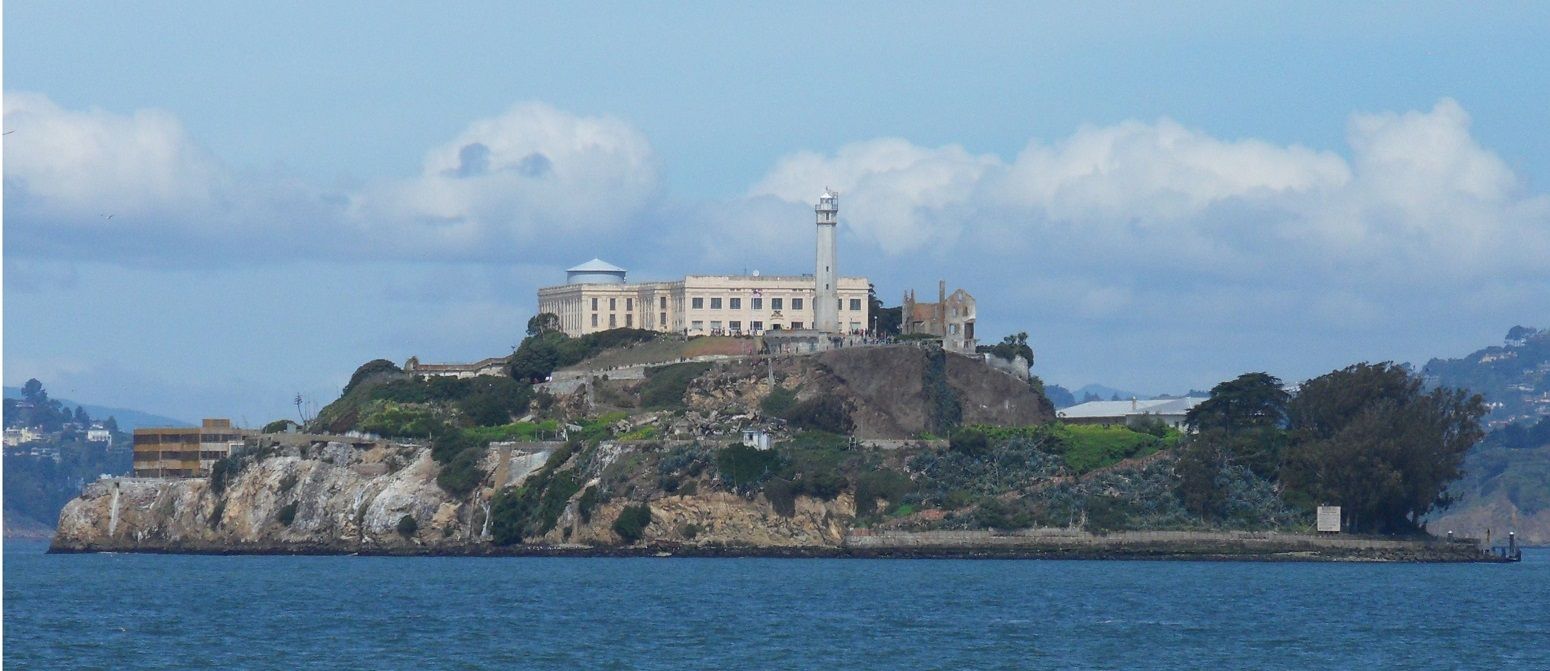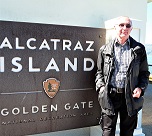


|
|
|
|||||||||||||||
|
|
||||||||||||||||
|
|
|||
|
|
San Francisco Alcatraz

Located in the San Francisco Bay, 1.5 miles (2.4 km) offshore from San Francisco, California, Alcatraz Island is often referred to as "The Rock". It is most famous as the federal prison - which it was from 1933 until 1963 - although the small island was first developed to provide a base and facilities for a lighthouse; it was then to become a military fortification, and in 1868 a military prison. Isolated from the mainland by the hazardous currents of the San Francisco Bay, Alcatraz was put to use during the American Civil War (1861-1865) to house Civil War prisoners. In 1867, a brick jailhouse was built and in 1868, Alcatraz was officially designated a long-term detention facility for military prisoners. In March 1907, it was officially designated as the Western U.S. Military Prison, and in 1909 construction began on the concrete main cell block, which was completed in 1912. During World War I, the prison was used to hold conscientious objectors. Alcatraz was deactivated as a military prison in October 1933 and transferred to the Bureau of Prisons, where it was designed to hold prisoners who continuously caused trouble at other federal prisons. The prison initially had a staff of 155, all highly trained in security, and on 11th August, 1934, the first batch of 137 prisoners arrived on the island. Most of the prisoners throughout its use were notorious bank robbers and murderers and its inmates included Al Capone, Robert Franklin Stroud (the Birdman of Alcatraz), George "Machine Gun" Kelly, Bumpy Johnson, Rafael Cancel Miranda, Mickey Cohen, Arthur R. "Doc" Barker, James "Whitey" Bulger, and Alvin "Creepy" Karpis (who served more time at Alcatraz than any other inmate). The Island also provided housing and facilities for the Bureau of Prisons staff and their families. During its 29 years of operation as a prison, it claimed that no prisoner had successfully escaped. A total of 36 prisoners did make a total of 14 escape attempts, two men trying twice; 23 were caught, six were shot and killed during their escape, two drowned, and five are listed as "missing and presumed drowned". The most violent escape attempt occurred on May 2, 1946, when a failed escape attempt by six prisoners led to the Battle of Alcatraz, which resulted in their deaths and the death of a warden. On June 11, 1962, Frank Morris and John and Clarence Anglin carried out one of the most intricate escapes by enlarging the air vents in their cells and using it to enable them to get on the roof of the prison block and then down to the sea with a dingy they had constructed. No trace of them was ever found and they are presumed to have drowned in the cold, strong currents of the bay. The prison was closed in March 1963 due to the high operating costs, the erosion of the buildings and the environmental effects of the sewage being released into the San Francisco Bay. The inmates were transferred to a newly constructed prison in Illinois. In November 1969, the island was occupied by Native American Indians who held it for more than 19 months as part of a protest which swept America in the 1970s. During this occupation, several buildings at Alcatraz were damaged or destroyed by fire, including the recreation hall, the Coast Guard quarters and the warden's home, although the origin of the fires is disputed. The U.S. government demolished a number of other buildings after the occupation had ended. Graffiti from the period of Native American occupation can still be seen at many locations on the island and the former band practice room in the basement of a cellblock now houses an exhibition dedicated to the occupation. In 1972 Alcatraz became a national recreation area and in 1986 received designation as a National Historic Landmark. Today, the island is managed by the National Park Service as part of the Golden Gate National Recreation Area; visitors reach the island by ferry from Pier 33, near Fisherman's Wharf, San Francisco disembarking and walking up the hill to the buildings. It is now a popular tourist site and the Island has been set up to cater for visitors who can wander around the island. Main Cell house gives an indication of the living facilities for the prisoners and a number of cells can also be seen. It is also possible to see the arrangements that existed for the prisoners to have visitors and the measures taken to keep them apart.
Visitors can see the Library and in the Dining Hall they can have a detailed brief of the prisoners every day life. They can step out into the Recreation Yard where the prisoners were able to get some fresh air and exercise and hear all about the process with an audio tour narrated by former wardens and prisoners. Other buildings scattered across the island such as the ruins of the Warden's House and Officers Club, and the Lighthouse can also be visited. It is also possible to buy souvenirs from an on-site shop.
To see more photographs and take a virtual tour of the site click on the photoshow below.
Additional information can be found on Encyclopaedia Britannica
|
|
|
|
|
|||
All Photographs were taken by and are copyright of Ron Gatepain
| Site Map |
